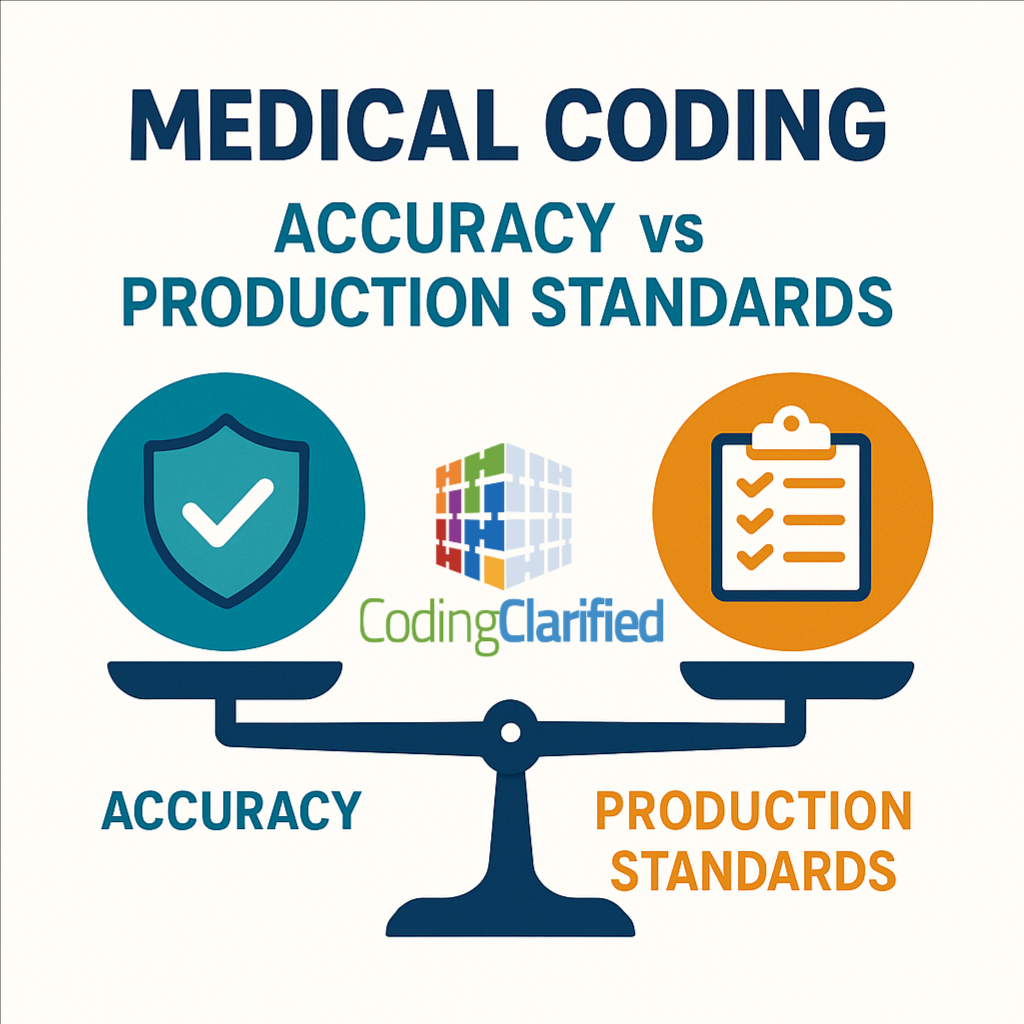How Coders Can Code Accurately and Meet High Production Standards
Accuracy and productivity are the twin pillars of success in medical coding. Whether you’re a new graduate or a seasoned CPC, balancing these two expectations can be challenging—but it’s entirely achievable with the right habits, workflow, and mindset. When it comes to medical coding accuracy vs production standards, let’s explore how to code both quickly and correctly while maintaining compliance and integrity.
Understand That Accuracy Comes First
Production goals are meaningless if the coding isn’t correct. One incorrect modifier, upcoded diagnosis, or mismatched CPT can lead to denials, audits, or even compliance issues. Always prioritize quality before quantity. Many employers track accuracy rates alongside productivity—and both must stay within acceptable benchmarks (typically 95% or higher for accuracy).
Tips for accuracy:
-
Review documentation carefully before coding.
-
Keep your ICD-10-CM, CPT, and HCPCS books or encoder tools updated yearly.
-
Follow official guidelines (like AHA Coding Clinic and CPT Assistant).
-
Revisit payer-specific policies to ensure compliance.
Learn Your Facility’s Productivity Standards
Each organization defines “high production” differently. For example:
-
Outpatient coders: 25–40 charts per day
-
Inpatient coders: 2–4 records per day
-
Pro-fee coders: 150–250 encounters per day
Understanding your employer’s benchmarks allows you to set realistic daily goals. Once you know the target, you can measure your progress and identify areas for improvement.
Build Strong Coding Habits
Consistency builds speed. The best coders have systems that minimize rework and distractions.
Productivity habits that make a difference:
-
Organize reference materials (guidelines, payer lists, LCD/NCDs).
-
Code similar account types in batches for efficiency.
-
Avoid multitasking; focus on one record at a time.
-
Use dual monitors if possible—documentation on one screen, encoder on the other.
-
Track common denial reasons and code them right the first time.
Use Technology Wisely—But Verify Everything
Encoders, AI tools, and EHR-integrated coding assistants can increase speed, but they should never replace coder judgment. Always verify auto-suggested codes against the documentation.
Smart use of technology:
-
Use shortcuts and templates to reduce typing.
-
Create personalized quick-reference notes for repetitive code sets.
-
Double-check all computer-generated codes before submission.
Stay Current and Keep Learning
Coding guidelines, payer rules, and medical terminology evolve constantly. The most productive coders are also the most educated.
Ongoing education ideas:
-
Attend webinars or workshops.
-
Read AAPC or AHIMA updates.
-
Subscribe to trusted coding newsletters.
-
Practice coding real-world scenarios to sharpen speed and confidence.
Audit Yourself Before Someone Else Does
Regular self-auditing is the hallmark of a professional coder. Review a few charts each week, compare your results to the official documentation, and note any recurring errors. This builds awareness, improves accuracy, and prepares you for employer or payer audits.
Find Balance Between Quality and Quantity
High production with poor accuracy will hurt your reputation—and low production with perfect accuracy can impact performance reviews. The key is balance. With practice and process refinement, you’ll naturally improve both.
Accurate, compliant coding is productive coding. When you focus on quality, efficiency follows. By staying organized, embracing continuous education, and refining your workflow, you’ll not only meet production expectations—you’ll exceed them while upholding the integrity of the medical coding profession.
Read more here:
How to Increase Medical Coding Productivity
Medical Coding Productivity Standards

